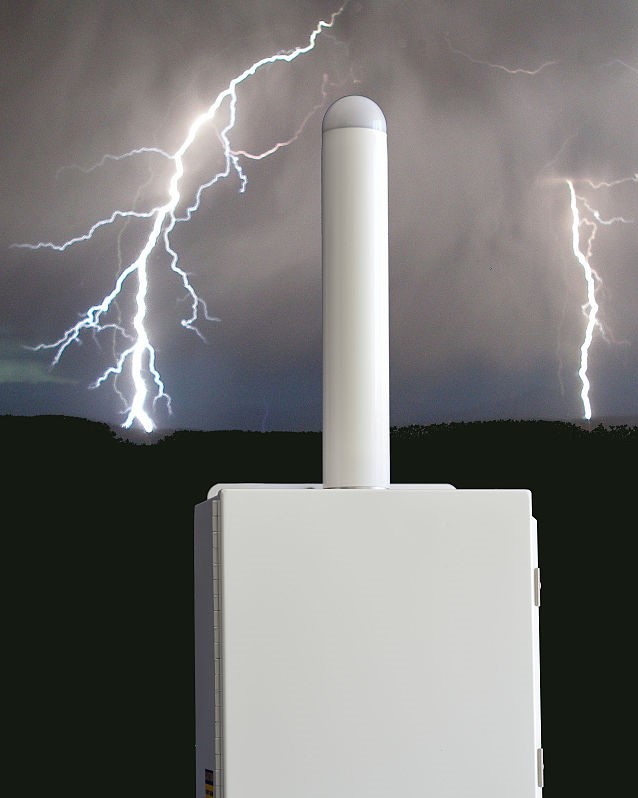If you’ve heard about a live lightning tracker, you probably wonder how it works. The concept of detecting lightning before it strikes may seem like a complicated and even impossible thing to accomplish. But with the right lightning sensor, you can accurately detect lightning activity and predict the severity of storms. Lightning sensor systems may consist of:
- Radiofrequency detectors
- Interferometers
- Ground-based networks of sensors
- Optical monitors
- GPS technology
The accuracy of lightning detectors largely depends on what classification of lightning the system is able to identify. There are two main types of lightning flashes: cloud-to-ground and cloud-to-cloud. Here’s how each type of lightning is detected.
Cloud-to-Ground Strikes
A real time lightning tracker can identify electromagnetic pulses (EMPs) that are produced by lightning discharges. Lightning detecting systems that can find cloud-to-ground strikes mostly consist of antennas. These systems rely on either triangulation, attenuation, or signal frequency.
In-Cloud Lightning Detection
You may not realize that visible lightning strikes are only a tiny fraction of the actual lightning discharges that take place in our atmosphere. In-cloud lightning discharges represent the vast majority of all lightning activity. This is why total lightning detection is so crucial to obtaining accurate weather alerts. The best way to get the most timely and precise weather alerts is by relying on a robust system that consists of hundreds of lightning sensors.
Thunderstorm Alerts
When you combine a lightning sensor with a weather radar system, you get a reliable weather alert system. You can know when storms are coming much more quickly than other people and be able to anticipate whether there will be heavy rainfall or hail.
The inner-workings of weather data networks is quite impressive. Thanks to advancements in technology, we have the ability to detect lightning faster and more accurately than ever. Consider relying on a lightning detection system to keep your business safe from severe weather events.
How Is Lightning Measured?

When a heavy thunderstorm hits, a sudden flash of lightning can be startling. Though it seems isolated, these strikes are constantly occurring during periods of severe weather. A lightning detection sensor is able to identify any flash of lightning, whether it’s visible or not. This information can reveal significant details about the location and direction of the storm.
Electromagnetic Pulses
A lightning strike puts out a strong electromagnetic pulse, or EMP. A detector can sense an EMP from a great distance and report its magnitude. However, an EMP can emit from other sources that generate energy, which can sometimes lead to inaccurate readings. Unfortunately, common interferences are often popular items that people use every day:
- Powerlines
- Car engines
- Cell phones
- Computers
- Microwaves
- Radios
When it comes to parsing out these false alarms, an advanced detection system uses innovative technology to separate lightning strikes from other EMP sources. These systems are often more accurate and provide far more extensive data.
Lightning Readings
Identifying the presence of an EMP is only half of the equation. A real time lightning tracker is able to not only detect the energy emitted from the EMP but also report the strength of the pulse. EMP strength readings allow weather experts to approximate the distance between the sensor and the spot where the pulse was actually measured.
Multiple readings create enough data to draw some significant conclusions. With all this information, observers can determine the current locations of storms, as well as the direction they’re expected to travel.
Warning Systems
Once weather stations are able to identify, locate, and predict the presence of lightning, the public can be alerted to the potential danger ahead of time. A lightning warning system lets people know when strikes have been detected nearby, allowing them to retreat to a safe place. Get in touch with an innovative weather tracking company to prepare yourself, and anyone else on your property, for severe storms.





